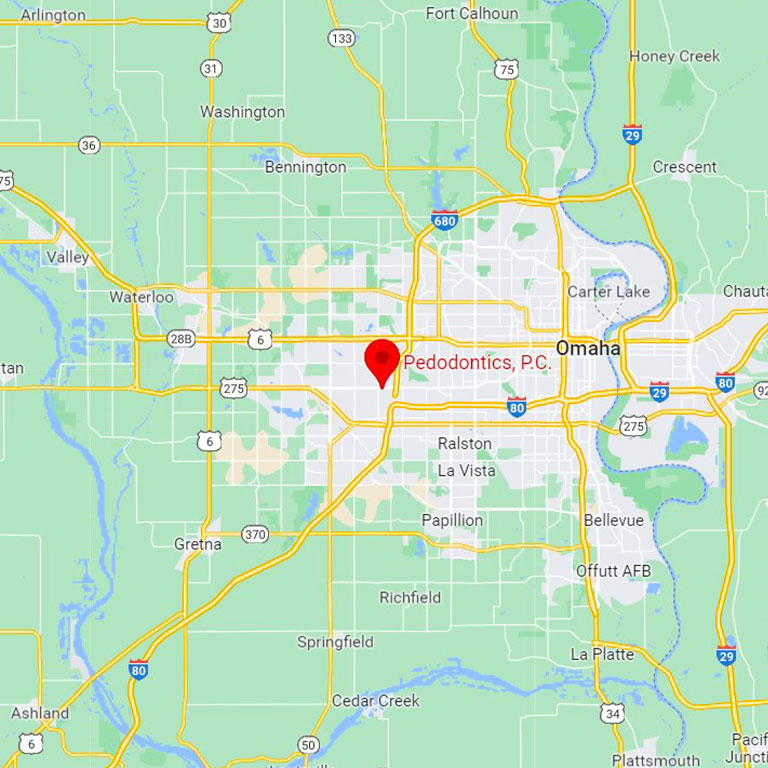What Happens If My Child Has a Tongue
What is tongue thrusting? And how can an orthodontist or dentist help? At Pedodontics, P.C., we specialize in dealing with child and adolescent dental and orthodontic care. Our doctors see how tongue thrusting impacts a child’s orthodontic development. It is common among babies because they are born pushing their tongues forward when they swallow. But as a child grows, they need to learn the correct position for their tongue. If they learn too late, it impacts a child’s orthodontic development. But how can families identify and change tongue thrusting in their children before it becomes a problem?
What is Tongue Thrusting?
Tongue thrusting is when the tongue is in the wrong position while at rest while swallowing, or during the speech, which causes the tongue to push against the teeth. Normally your tongue rests against the roof of your mouth with the tip sitting just behind the front teeth. It becomes a problem when the tongue pushes too far forward, either pressing against the back of the upper teeth or sticking out between the upper and lower teeth.
Signs of Tongue Thrusting in Children:
- They have an open bite.
- Their tongue sticks out between the teeth when resting, swallowing, or speaking.
- They’re mouth breathing when the child does not have allergies or congestion.
- They have a speech impediment, which is caused by the tongue pushing against or protruding between the front teeth.
Why Be Concerned?
When the tongue pushes against teeth while resting, swallowing, or speaking, it puts pressure on them all the time. Since braces move teeth into proper alignment by using a small amount of consistent pressure against the teeth, it makes sense that this consistent pressure from the tongue can create problems. Orthodontic treatment can move the teeth and jaws into proper alignment, but with an untreated tongue thrust, it can reverse successful orthodontic work. Tongue thrusting also causes many other problems, including:
- Malocclusions (crossbite, overbite, underbite).
- Open bite between the top and bottom teeth.
- Crowded or crooked teeth.
- Lisp and other speech problems.
- Difficulty biting into foods, chewing, and swallowing.
- TMJ disorder.
- Sleep/breathing disorders.
Causes & Treatment
Almost all infants start tongue thrusting. When babies first begin eating baby food, their tongue pushes most of the food out of their mouth because of tongue thrusting. As they grow, the resting and swallowing tongue position is supposed to mature into a healthy position sometime before the age of 6.
Many factors may cause tongue thrusting. This can include:
- Genetics.
- An enlarged tongue.
- Certain types of bottle nipples.
- Prolonged use of a bottle or pacifier.
- Prolonged thumb or finger sucking.
- Allergies that cause chronically swollen tonsils.
If your child has an open bite, or you think that they have a tongue thrusting problem, you can schedule a consultation with your dentist and/or orthodontist. They will evaluate your child to determine if tongue thrusting is the primary problem. If there is an underlying problem, that would need to be treated.
Depending on your child’s age and the severity of the symptoms, they may choose to wait and see if they begin to grow out of it. They may also recommend certain exercises or appliances that you can use at home to correct the tongue-thrusting habit. Treatment for underlying problems or other orthodontic issues may also be necessary.
Get Your Child Dental & Orthodontic Care Today!
At Pedodontics, P.C., we offer a diverse group of treatments for children and adolescents in Omaha, NE. If you’re a parent that is looking to start treatment for their child, contact our office today! Our doctors and staff are happy to answer any questions or concerns you have. We can’t wait to get started working with you and your family.




Leave a Reply
Want to join the discussion?Feel free to contribute!